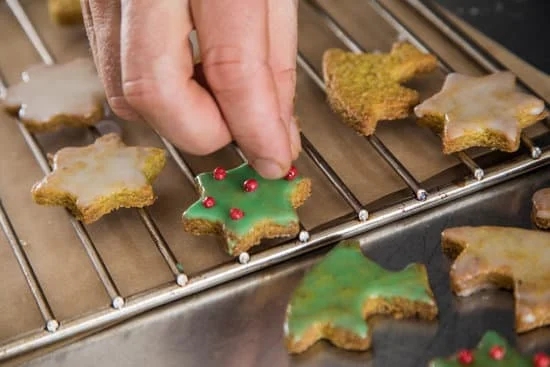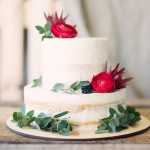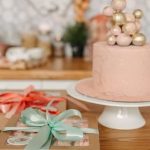Are you looking to take your cake decorating to the next level? Learn how to use molds for cake decorating to create stunning designs with precision and ease. Using molds can help elevate your creations, providing intricate details and consistent shapes that are difficult to achieve by hand alone.
Molds play a crucial role in cake decorating, allowing bakers to replicate intricate patterns, shapes, and designs that would otherwise be challenging to create freehand. Whether you’re a beginner or experienced baker, incorporating molds into your decorating repertoire can open up a world of possibilities for your cakes.
From silicone and plastic to metal molds, the choices available are vast. Understanding the different types of molds for cake decorating and selecting the right one for your design is essential.
Factors such as shape, size, and detailing should be taken into consideration when choosing a mold to ensure that it complements your desired cake aesthetic. Stay tuned as we delve deeper into the various types of molds and provide insights on how to pick the perfect one for your cake project.
Types of Molds for Cake Decorating
When it comes to cake decorating, using molds can elevate your designs and create stunning and intricate patterns that are otherwise difficult to achieve by hand. There are various types of molds available for cake decorating, each with its own unique characteristics and benefits. Silicone molds are flexible, easy to use, and provide detailed imprints on the cake surface.
Plastic molds are durable, affordable, and come in a wide range of shapes and sizes. Metal molds are perfect for intricate designs that require sharp edges and precise details.
Choosing the right mold for your design is essential to achieving the desired result. Consider factors such as the complexity of the design, the size of the mold needed, and the material of the mold. For intricate designs with fine details, silicone molds are ideal due to their flexibility and ability to capture even the smallest features. If you need a sturdy mold for a larger cake or a design that requires sharp edges, metal molds would be more suitable.
Before using any type of mold for cake decorating, it is crucial to properly prepare it to ensure easy release and clean results. Clean the mold thoroughly with warm soapy water and allow it to dry completely before greasing it with a thin layer of vegetable oil or non-stick baking spray.
This will prevent sticking and make it easier to remove the cake once it is baked. Understanding how to use molds for cake decorating effectively starts with proper preparation of the mold itself.
Choosing the Right Mold for Your Design
When it comes to cake decorating, choosing the right mold is a crucial step that can make all the difference in the final outcome of your baked creation. There are various types of molds available on the market, including silicone, plastic, and metal molds. Each type has its own unique characteristics and benefits that suit different design needs and baking preferences.
To ensure you select the perfect mold for your cake decorating project, here are some factors to consider:
- Design Complexity: Consider the intricacy of your design – intricate designs may require silicone molds for their flexibility and detailed imprints.
- Size Requirements: Determine the size of your cake and choose a mold that will provide the appropriate dimensions for your desired outcome.
- Heat Resistance: If you plan on baking with high temperatures or creating hot sugar decorations, opt for molds that can withstand heat without warping or melting.
Understanding these key factors will help you make an informed decision on which mold to use for your cake decorating endeavors. Whether you are creating a simple silhouette or a multi-tiered masterpiece, selecting the right mold is essential for achieving professional-looking results.
Now that you have considered these factors, you can confidently move forward with using molds for cake decorating. By choosing a mold that aligns with your design vision and baking requirements, you are setting yourself up for success in creating visually stunning and delicious cakes that will impress any audience.
Preparing the Mold
When it comes to cake decorating, preparing your mold correctly is crucial for achieving the perfect design. Cleaning and greasing your mold properly can make a significant difference in the outcome of your cake.
Cleaning the Mold
Before using any mold for cake decorating, it is essential to ensure that it is clean and free from any residue. Wash the mold with warm, soapy water and rinse thoroughly to remove any traces of dirt or dust. Pay close attention to intricate details or crevices in the mold, making sure they are thoroughly cleaned to avoid imperfections in your final cake.
Greasing the Mold
One key step in using molds for cake decorating is greasing the mold adequately to prevent sticking and ensure easy release of the cake after baking. Use a pastry brush or non-stick spray to coat the inside of the mold with a thin layer of oil or butter.
Make sure to cover all surfaces evenly, including corners and edges, to guarantee a smooth release without damaging the design of your cake. Proper greasing will also help maintain the shape and details of the mold, preserving its durability for future use.
By following these steps for cleaning and greasing your mold before using it for cake decorating, you set yourself up for success in creating beautifully designed cakes that impress every time. Taking care in this preparation process ensures that your cakes release easily from the mold intact and ready for decoration.
Filling the Mold With Cake Batter
When it comes to using molds for cake decorating, one crucial step is filling the mold with cake batter. Achieving even distribution of the batter ensures that your cake comes out perfectly shaped and cooked. Here are some tips to help you fill your molds effectively:
Use a Spatula or Spoon
To ensure that the cake batter is evenly distributed throughout the mold, use a spatula or spoon to spread the batter. Start from the center and work your way out towards the edges, making sure that every part of the mold is filled.
Avoid Overfilling
It’s important not to overfill the mold with batter as it can cause the cake to rise unevenly or spill over during baking. Fill the mold only up to about 2/3 full to leave room for expansion while baking.
Tap Out Air Bubbles
Before placing the filled mold in the oven, tap it gently on a countertop to release any air bubbles trapped in the batter. This helps prevent uneven pockets in the finished cake.
By following these tips for even distribution when filling your cake molds with batter, you can ensure that your cakes come out looking professional and delicious every time. Practice makes perfect, so don’t be afraid to experiment and refine your technique until you achieve consistent results in your cake decorating endeavors.
Baking With Molds
When using molds for cake decorating, it is essential to adjust your oven temperature accordingly. Always preheat your oven to the recommended temperature range specified in your recipe. Be mindful of the size and shape of your mold, as thicker or larger cakes may require lower temperatures and longer baking times. Keeping a close eye on the baking progress will help prevent overcooking or undercooking your cake.
Timing is crucial when baking with molds for cake decorating. Use a timer to track the baking time accurately and avoid opening the oven door too frequently, as this can cause temperature fluctuations that affect the baking process.
Test the doneness of your cake by inserting a toothpick into the center – if it comes out clean or with a few crumbs, your cake is ready. Allow your cake to cool in the mold before carefully removing it to prevent any damage to the design.
| Mold Type | Baking Adjustment |
|---|---|
| Silicone | Check for even heat distribution due to flexibility |
| Plastic | Prevent melting by using lower temperatures for longer periods |
| Metal | Ensure consistent heat distribution throughout by monitoring closely |
Removing the Cake From the Mold
When it comes to cake decorating, one crucial step is removing the cake from the mold without causing any damage to the intricate design. Here are some techniques to ensure your cakes come out clean and flawless every time:
1. Cooling the Cake Properly: Allow the cake to cool completely in the mold before attempting to remove it. This will help the cake set and hold its shape, making it easier to release from the mold without breaking or sticking.
2. Using a Knife or Spatula: Gently run a knife or spatula around the edges of the mold to loosen the cake. Be careful not to cut into or damage the cake itself. This will help create a separation between the cake and the mold, making it easier to remove.
3. Inverting and Tapping: Once you have loosened the cake around the edges, carefully invert the mold onto a flat surface. Lightly tap on the bottom of the mold to help release the cake. The gravity and tapping motion will assist in freeing up any stubborn areas.
It is essential to follow these steps diligently to achieve clean and undamaged results when removing your molded cakes. By taking care during this process, you can showcase your beautifully decorated cakes with precision and perfection every time.
Decorating the Molded Cake
Decorating a molded cake is where your creativity can truly shine. Once you have successfully baked your cake using the molds, it’s time to add those finishing touches that will make your creation stand out. One of the key elements in decorating a molded cake is the use of frosting and icing to enhance the overall look and taste of the cake. Frosting not only adds sweetness but also acts as a glue for other decorations.
When it comes to frosting a molded cake, you can choose from a variety of options such as buttercream, fondant, ganache, or cream cheese frosting. Each type of frosting offers different textures and flavors, so it’s important to choose one that complements the flavor of your cake. Buttercream is often preferred for its creamy texture and versatility in terms of color and piping decorations.
In addition to frosting, you can also add other embellishments to your molded cake to make it even more visually appealing. Consider using edible decorations like fresh fruits, chocolate shavings, edible flowers, or sprinkles to add pops of color and texture. These embellishments not only enhance the aesthetic appeal but also provide additional flavors and textures to delight your taste buds.
| Types of Frosting | Examples |
|---|---|
| Buttercream | American buttercream, Swiss meringue buttercream |
| Fondant | Rollable fondant, poured fondant |
| Ganache | Dark chocolate ganache, white chocolate ganache |
Decorating a molded cake allows you to personalize your creation according to the occasion or theme. Whether you’re celebrating a birthday, anniversary, wedding or any special event, decorating with molds for cake decorating gives you endless possibilities for creativity. Experiment with different techniques such as piping designs with frosting tips or using stencils for intricate patterns on your molded cakes. Remember that practice makes perfect when it comes to mastering the art of decorating cakes with molds.
Maintenance and Storage of Cake Molds
In order to ensure the longevity and reusability of your cake molds, proper maintenance and storage are essential. By following a few simple steps, you can keep your molds in top condition for future baking projects.
After using your molds, make sure to clean them thoroughly with warm, soapy water. This will help remove any leftover batter or residue that could affect the quality of your next cake. Additionally, gently dry the molds before storing them to prevent any moisture buildup.
When it comes to storing your cake molds, it is important to keep them in a cool, dry place away from direct sunlight. This will prevent any warping or discoloration that could occur if exposed to extreme temperatures. Consider using a designated storage area or container to keep your molds organized and easily accessible for future use.
By taking the time to properly care for your cake molds, you can extend their lifespan and continue creating beautifully molded cakes for years to come. Remember these tips on maintenance and storage as you explore the endless possibilities of how to use molds for cake decorating.
Frequently Asked Questions
How Do You Use Cake Molds?
Cake molds are used to shape and bake cakes in various designs and sizes. To use a cake mold, first, grease it with butter or non-stick spray to prevent the cake from sticking.
Pour the batter into the mold, making sure not to overfill it. Bake the cake according to the recipe’s instructions, then let it cool before removing it from the mold.
How Do You Keep a Cake From Sticking to a Silicone Mould?
To prevent a cake from sticking to a silicone mold, it’s essential to properly prepare the mold before adding the batter. Start by greasing the silicone mold with butter or cooking spray, ensuring all crevices are covered.
Once the cake is baked and cooled, gently press on the bottom of the mold to release the cake without damaging its shape.
How Do You Use Silicone Icing Mould?
Silicone icing molds are ideal for creating intricate designs for cakes and pastries. To use a silicone icing mold, knead fondant or gum paste until pliable, then press it firmly into the mold, ensuring all details are filled.
Gently remove excess fondant around the edges before carefully unmolding the design onto your dessert. Allow time for it to set before serving.

Welcome to our cake decorating blog! My name is Destiny Flores, and I am the proud owner of a cake decorating business named Cake Karma. Our mission is to provide delicious, beautiful cakes for all occasions. We specialize in creating custom cakes that are tailored specifically to each customer’s individual needs and tastes.





